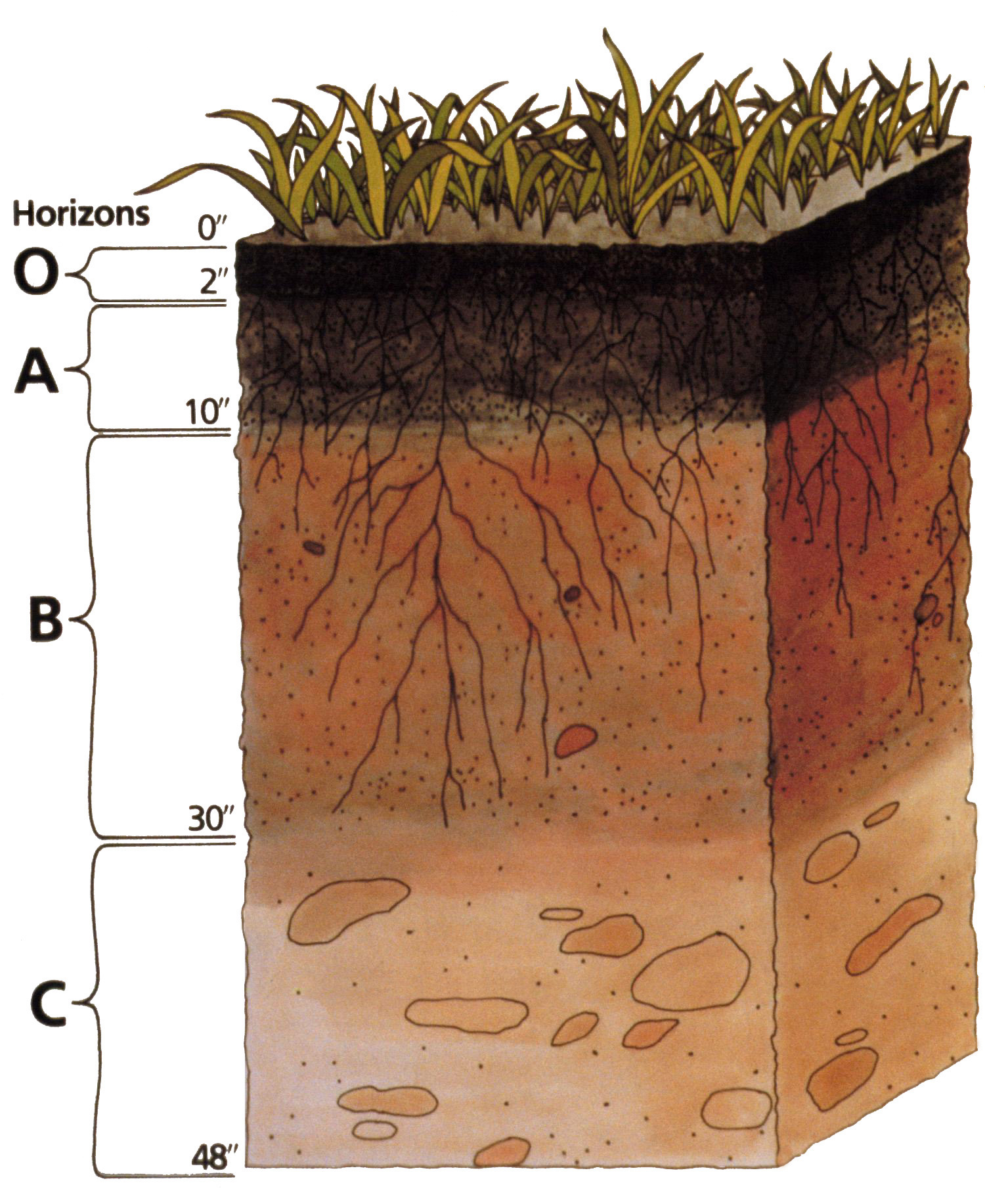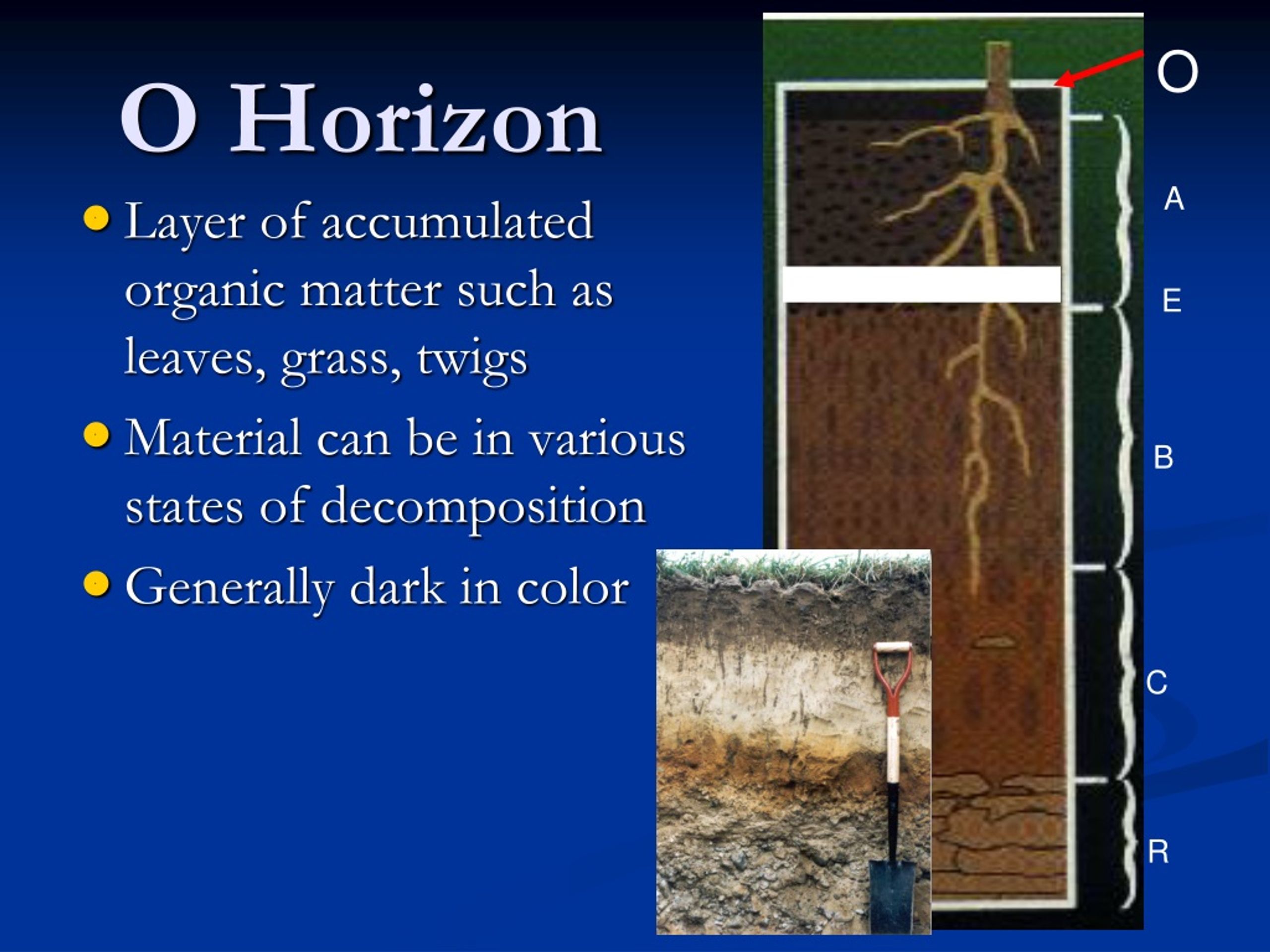
Soil horizons are integrative proxies for suites of soil properties and as such can be used as an observable unit to track modifications within soil profiles. Urbanization processes modify ecosystem function by changing the layers of soils identified as soil horizons. The dominant processes of the O horizon are additions of organic matter, and transformations from fibric to sapric.Soils support terrestrial ecosystem function and therefore are critical urban infrastructure for generating ecosystem services. Because of their organic content, these horizons are typically black or dark brown in color. It is possible to have multiple O horizons stacked upon one another exhibiting different decomposition stages. Hemic is in between sapric and fibric, with some barely recognizable plant material present.

Sapric material is broken down into much finer matter and is unrecognizable as a plant part. In a fibric O layer, plant matter is recognizable (e.g., it is possible to identify a leaf). An O horizon can have various stages of decomposed organic matter: highly decomposed, sapric moderately decomposed, hemic and minimally decomposed, fibric. Anaerobic conditions slow the decomposition process and allow organic material to accumulate. Two main scenarios result in the formation of an O horizon: saturated, anaerobic conditions (wetlands) or high production of leaf litter in forested areas. O: An O horizon has at least 20% organic matter by mass.Additions and losses are the dominant processes of A horizons. The A horizon, over time, is also a zone of loss – clays and easily dissolved compounds being leached out – and A horizons are typically more coarse (less clay) compared to underlying horizons (with the exception of an E horizon). Compared to other mineral horizons (E, B, or C) in the soil profile, they are rich in organic matter, giving them a darker color. A buried A horizon is a clear indication that soil and landscape processes have changed some time in the past. Natural events, such as flooding, volcanic eruptions, landslides, and dust deposition can bury an A horizon so that it is no longer found at the surface. A: An A horizon is a mineral horizon. This horizon always forms at the surface and is what many people refer to as topsoil.

Knowing something about the geomorphic history of the area being investigated helps unlock the landscape history the soils show. There are some generalized concepts of how soil layers develop with time these are expressed below, but due to the variability of natural processes over geologic time, generalized concepts are sometimes overly general. And some profiles may have multiple varieties of one horizon, such as an A-B-E-B. Some profiles may have all the horizons, O-A-E-B-C-R. Some soil profiles have an A-C combination, some have an O-E-B, an O-A-B, or just an O. There is no set order for these horizons within a soil. There are five soil horizons: O, A, E, B, and C. ( R is used to denote bedrock.)


Through the interactions of these four soil processes, the soil constituents are reorganized into visibly, chemically, and/or physically distinct layers, referred to as horizons.


 0 kommentar(er)
0 kommentar(er)
